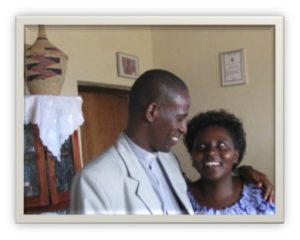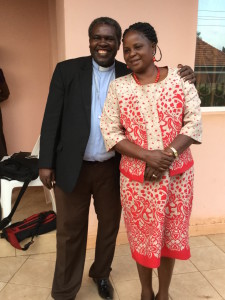When we facilitate training around the world, we use a study guide created by Dr. Carrie Miles, which provides a deep dive into what the Bible says about men and women. Today’s post is one in an occasional series of articles adapted from content in that life-changing curriculum, Face to Face.


Sometimes, however, you can’t seem to get your belief in the Bible to square with your belief in equality and justice. Or maybe you just can’t see how what the Bible says about gender has much meaning for your life and relationships.
If this describes you, you are not alone. Many people simply do not find what they have been told the Bible teaches about gender and marriage to be very useful in the world today.
For example, not long ago, a cover story in Newsweek Magazine contended that no one would want to follow biblical teachings about women or relationships. Citing the Apostle Paul and the story of Abraham and Hagar, the author argued that “biblical” marriage means nothing more than the subjugation of women to men.
In our work in the developing world, we often find that even people who claim to follow the Bible cannot escape the syncretism that injects cultural bias into Scripture. We all read the Bible through cultural lenses. When people see for themselves what the Bible actually says, instead of what they’ve been taught, or assumed, that it says, they are often surprised and even delighted.
In the beginning…
It’s helpful to look at the original languages of the Scriptures, to understand what might be lost in translation. Today we want to look at the Hebrew words used to describe men and women in the very beginning, in the Genesis creation account.
The Bible presents a three-part story of human relationship with God and with each other. This story reveals that we were created male and female, in the image of God, to fulfill an ideal – humanity living together in unity, harmony, and companionship, regardless of gender, race, age, or social position.
The second part of the story traces our rejection of the life of faith and God’s abundant provision for us. This fall from grace brought division among God’s creation, a striving for power over each other, and the loss of the fearless, intimate love for which God created us.
The final chapter of this story finds us redeemed – bought back by Christ from the bondage of the fallen world into which we sold ourselves. Both economic and romantic/sexual motives are accepted, but with the addition of another critical layer – agape, self-giving, compassionate love, love the way God loves us.
Let’s begin by looking at Genesis 1. There we see that after creating the heavens and the earth, light and dark, plants and animals:
26 Then God said, “Let us make mankind in our image, in our likeness, so that they may rule over the fish in the sea and the birds in the sky, over the livestock and all the wild animals, and over all the creatures that move along the ground.”
27 So God created mankind in his own image,
in the image of God he created them;
male and female he created them.
28 God blessed them and said to them, “Be fruitful and increase in number; fill the earth and subdue it. Rule over the fish in the sea and the birds in the sky and over every living creature that moves on the ground.”
29 Then God said, “I give you every seed-bearing plant on the face of the whole earth and every tree that has fruit with seed in it. They will be yours for food.
Genesis 2 tells the same story from a different angle, so to speak. We read:
7 Then the Lord God formed a [hu]man from the dust of the ground and breathed into his nostrils the breath of life; and the [hu]man became a living being…15 The Lord God took the [hu]man and put him in the garden of Eden to till and keep it. 7 Then the Lord God formed a [hu]man from the dust of the ground and breathed into his nostrils the breath of life; and the [hu]man became a living being…15 The Lord God took the [hu]man and put him in the garden of Eden to till and keep it.
20 The [hu]man gave names to all the cattle, and to the birds of the air, and to every animal of the field; but for the [hu]man there was not found a helper as his partner. 21 So the Lord God caused a deep sleep to fall upon the [hu]man, and he slept; then He took one of his ribs and closed up its place with flesh. 22 And the rib that the Lord God had taken from the [hu]man He made into a woman and brought her to the man.
23 Then the man said, “This [one] – at last – is bone of my bones and flesh of my flesh! This one shall be called Woman, for out of Man this one was taken.” 24Therefore a man leaves his father and his mother and clings to his wife, and they become one flesh. 25 And the man and his wife were both naked, and were not ashamed.
The Hebrew word for man is ‘ish. Up until Genesis 2:22, the word rendered “man” in most translations of Genesis 1 and 2 is not ‘ish. Rather, the underlying Hebrew word is ha’adam, a play on the word for the red earth, adamah, from which God created it (verse 7). In the text above, whenever the original Hebrew word is ha’adam, I inserted [hu] in front of “man.” What God formed from the earth in Genesis 2:7 was not a man (the Hebrew word for man is ‘ish) but a human being, or more literally, the being created from the earth, “the earth creature.”

The Hebrew word used to describe the woman, translated “helper,” is ‘ezer kenegdo. The problem with translating this rich word as “helper” (or worse, the corrupted form of “help meet”, “helpmate”) is that it implies the woman was created to be inferior and subordinate to man. A helper sounds like someone we might employ to do dull tasks that we don’t want to do ourselves, like wash dishes or dig holes. But this is not what God meant when he described what the human needed. Instead, God said the earth creature needed an ‘ezer kenegdo:
The noun, ‘ezer, is found 21 times in the Old Testament. It means “help”…someone who will succor another, e.g. to help them or aid them. The word is found twice in Genesis 2. In 16 of the other 19 occurrences of the word, the “help” spoken of refers to help which comes from one who is superior. In most cases, the “help” is God Himself….In those instances where ‘ezer does not refer to God it is used of such people as kings, who come to the help of another…. There is no connotation of inferiority or subordination attached to the word “help” (Joy Elasky Fleming).
For an example of the true meaning of the word ‘ezer, or help, consider Psalm 46:1, “God is our refuge and strength, a very present help in trouble.”

Note that dominion over the earth and the ability to have children are given as blessings, not commandments. This is like saying, “Go in peace!” or “Be blessed!” (or, for Trekkies, “Live long and prosper!”)
In a similar way, marriage is given as a blessing, not a commandment.
To get a free copy of the full intro and first chapter of Face to Face, simply subscribe to our site.
To see more of the first pages of Face to Face or to purchase a copy, visit our amazon page http://amzn.to/1pu4MH5
